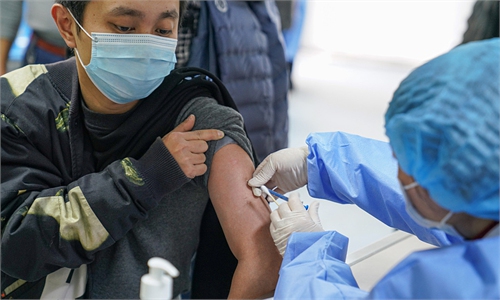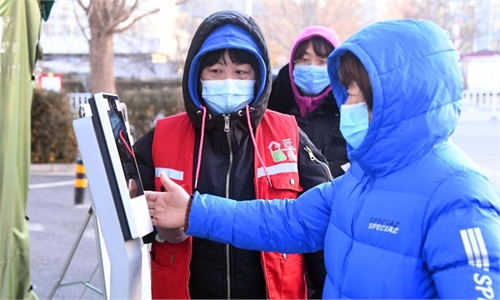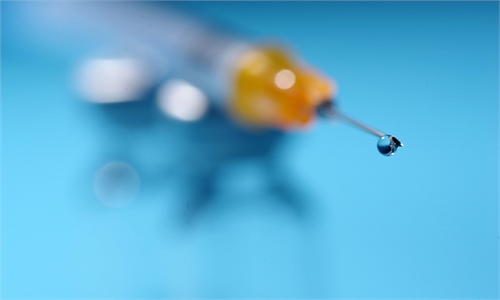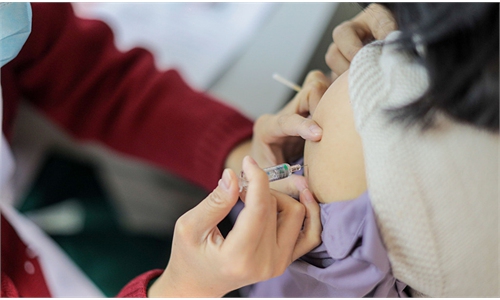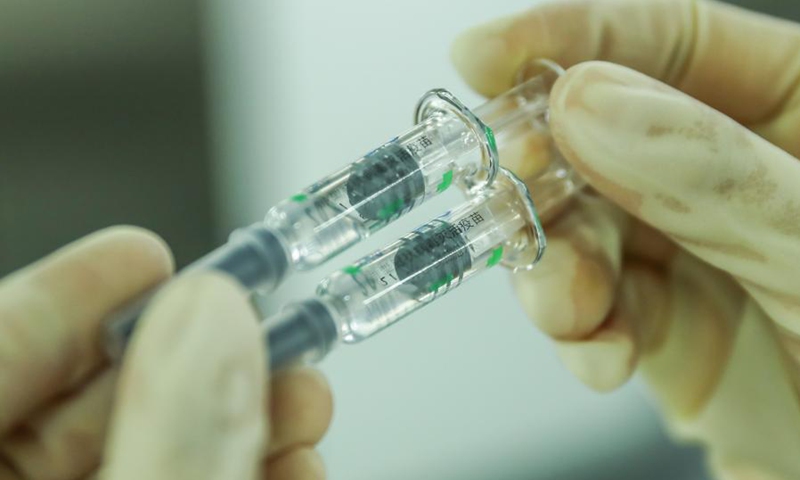
A staff member checks the packaging quality of COVID-19 inactivated vaccine products at a packaging plant of the Beijing Biological Products Institute Co., Ltd. in Beijing, capital of China, Dec. 25, 2020. Photo: Xinhua
China's capital city Beijing, along with East China's Shandong Province, has started its first round of free mass COVID-19 vaccinations for key groups amid sporadic cases. Beijing has set up 220 vaccination sites where more than 70,000 people have received shots so far.
Beijing's vaccinations started on the first day of 2021. Within two days, 73,537 people were vaccinated and no serious adverse reactions were reported, a spokesperson for Beijing Municipal Health Commission said at a news conference on Sunday. The city expects to complete the first round by mid-February, with nine key groups all vaccinated.
On Wednesday, Chinese health regulators granted approval to an inactivated vaccine developed by Beijing Biological Products Institute under Sinopharm's subsidiary China National Biotec Group (CNBG).
A Global Times reporter visited the largest temporary vaccination site in Beijing's Chaoyang district on Sunday, the third day of operations. It has capacity to vaccinate more than 1,000 people in high-risk groups, who are transported in groups to the site in minibuses.
The site is open from 9 am to 3 pm every day. It is busiest in the morning, with people lining up for their first dose.
An ambulance is parked outside the vaccination site to be ready to respond in case anyone has a serious adverse reaction.
An employee of a state-owned enterprise who came for his first vaccine told the Global Times that his employer had organized all employees who wanted the vaccine to come in a group.
"The inoculation site is very comfortable and the whole process is very orderly. The procedure took about 30 minutes, and we were asked to stay for another 30 minutes in case of serious side effects. Everyone was required to wear a mask at all times," said the employee.
"Most of us will be sent overseas after we're vaccinated. Many of us are feeling very excited to be offered the vaccine, as we're all pinning our hopes on it so we can get back to our business and go abroad as soon as possible," he told the Global Times.
In Beijing's Shunyi district, where more than 20 newly confirmed COVID-19 cases in a cluster infection were reported in the past two weeks, bus drivers were the first recipients of the vaccine. On Saturday, 141 bus drivers received their first shot at a local vaccination site, the Beijing Daily reported on Sunday.
Daxing district, which is home to China's biggest international airport, has set up 17 vaccination sites. More than 10,000 people have been vaccinated, the Beijing Daily reported.
Tancheng county in Shandong Province has also started mass vaccination rollout with key groups. Starting from December 24, the county has given shots to nearly 500 cold chain workers, frontline medical workers and students who are heading abroad, a health services official in charge of COVID-19 epidemic prevention told the Global Times.
"Before vaccination, we examined and asked about the condition of the recipients in detail, conduct pre-screening and repeatedly inform them about the risks," the official said. "At present, no adverse reactions have been reported by any person during the post-vaccination observation and follow-up visits."
"We have strict preventive measures at the vaccination site, such as social distancing requirements and limiting the number of people admitted per hour," she said.
Other provinces are also rolling out mass vaccination programs as the country's health officials vowed to ensure COVID-19 vaccines are affordable to all Chinese residents.
Shanghai-based vaccine expert Tao Lina said on Friday that he expected China could reach herd immunity by the end of 2021 after up to 1 billion residents, or 70 percent of the population, are vaccinated following the initial roll out to high-risk groups.

